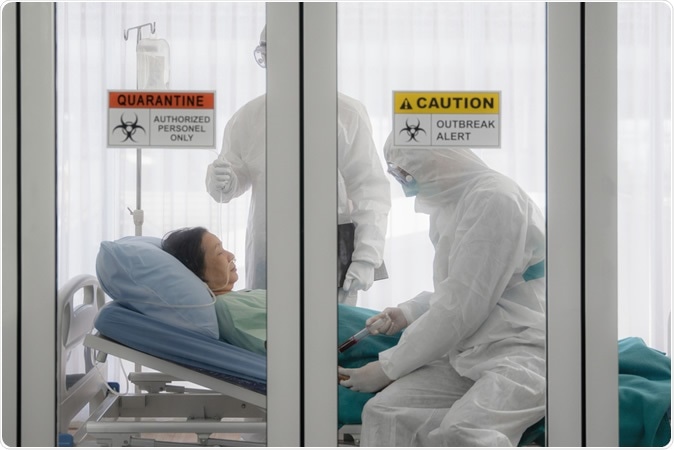With news that multiple patients from Wuhan were presenting with pneumonia, the response of the 43 public hospitals was to tighten their infection control protocol. One step was to intensify screening measures by including more eligibility criteria, including a visit to a hospital in mainland China. Any patient who screened positive for this virus was placed in an isolation room designed to prevent airborne infections, but a few were kept in a ward where patients had a meter or more of space between them.
The hospitals also stepped up training for staff on infection control measures. The staff was shown and trained on the use of personal protective equipment (PPE). Staff meetings were held to discuss infection control. Personal educational discussions were also held. The hospital also evaluated handwashing measures regularly.
Also, the staff were instructed to use PPE more consistently, that is, when carrying out any procedure that could give rise to an aerosol, such as inserting a tube into the trachea or open suctioning, rather than only when the patient was suspected or confirmed to have COVID-19 illness.

Coronavirus COVID-19 infected patient in quarantine. Image Credit: Mongkolchon Akesin / Shutterstock
The study
The researchers at Queen Mary Hospital in Hong Kong looked at the number of healthcare workers who contracted COVID-19 during the period of study. There were 1275 screenings for suspected cases, and 42 cases of COVID-19 were confirmed and treated during this time. Among these cases, only 1 of 13 confirmed cases in the first 32 days (6 weeks) from the beginning of the outbreak, when surveillance measures were put in place, was locally acquired.
In the next 29 cases, 27 were locally acquired and presented in the next ten days (days 33 to 42). Of these local cases, 28 belonged to one of 8 family clusters. And 11 were probably caught during a single gathering for sharing food, called “hot pot,” where the attendees used spoons or other utensils possibly contaminated with saliva to dip into serving pots. Among these cases were a child and a 91-year-old woman who were positive for the virus on testing but remained asymptomatic throughout.
413 healthcare workers were treating these cases, of which 11 were exposed without proper or adequate protection. All 11 were placed in a 14-day quarantine.
The investigators also took air samples from the area close to the mouth of a confirmed case, a patient with a moderate level of coronavirus in the blood. The samples were taken at different times: while speaking, while breathing normally, during heavy breathing, and while coughing.
They also looked for the presence of the virus at various locations inside the room.
The findings
None of the healthcare workers exposed to the infection became ill. That fact shows that careful adherence to best practices of protection can successfully stave off the transmission of coronavirus in a healthcare setting.
Secondly, the samples taken from the environmental air close to the mouth of a patient with the virus were, surprisingly, all negative, no matter how the patient was breathing, coughing, or speaking. The swabs from various objects and surfaces around the same room also proved negative, except for a window bench.
An expert interpreted these findings as reassuring. Says infectious disease specialist Gonzalo Bearman (not part of the current study), “The descriptive study employed unique environmental and air samples with the results suggesting that environmental transmission may play less of a role than person to person transmission in disease propagation.”
Person to person spread occurs between people in close contact, which is defined as within 6 feet or so. Another route of spread was thought to be through airborne droplets of respiratory secretion that fly through the air when a patient with COVID-19 coughs or sneezes. However, this latter mode of spread appears to be not a likely scenario in the current study. Most people are thought to be the most contagious if they are clearly sick with COVID-19. Asymptomatic cases may not spread it as quickly, and neither does it spread through fomites, or by touching surfaces with the virus on it, according to the current study.
The scientists conclude: “Appropriate hospital infection control measures can prevent healthcare-associated transmission of the coronavirus. Vigilance in hand-hygiene practice, wearing surgical masks in the hospital, and appropriate use of personal protective equipment in patient care, especially when performing aerosol-generating procedures, are the key infection control measures to prevent hospital transmission of the virus.”
Journal reference:
Cheng, V., Wong, S., Chen, J., Yip, C., Chuang, V., Tsang, O., . . . Yuen, K. (n.d.). Escalating infection control response to the rapidly evolving epidemiology of the Coronavirus disease 2019 (COVID-19) due to SARS-CoV-2 in Hong Kong. Infection Control & Hospital Epidemiology, 1-24. doi:10.1017/ice.2020.58